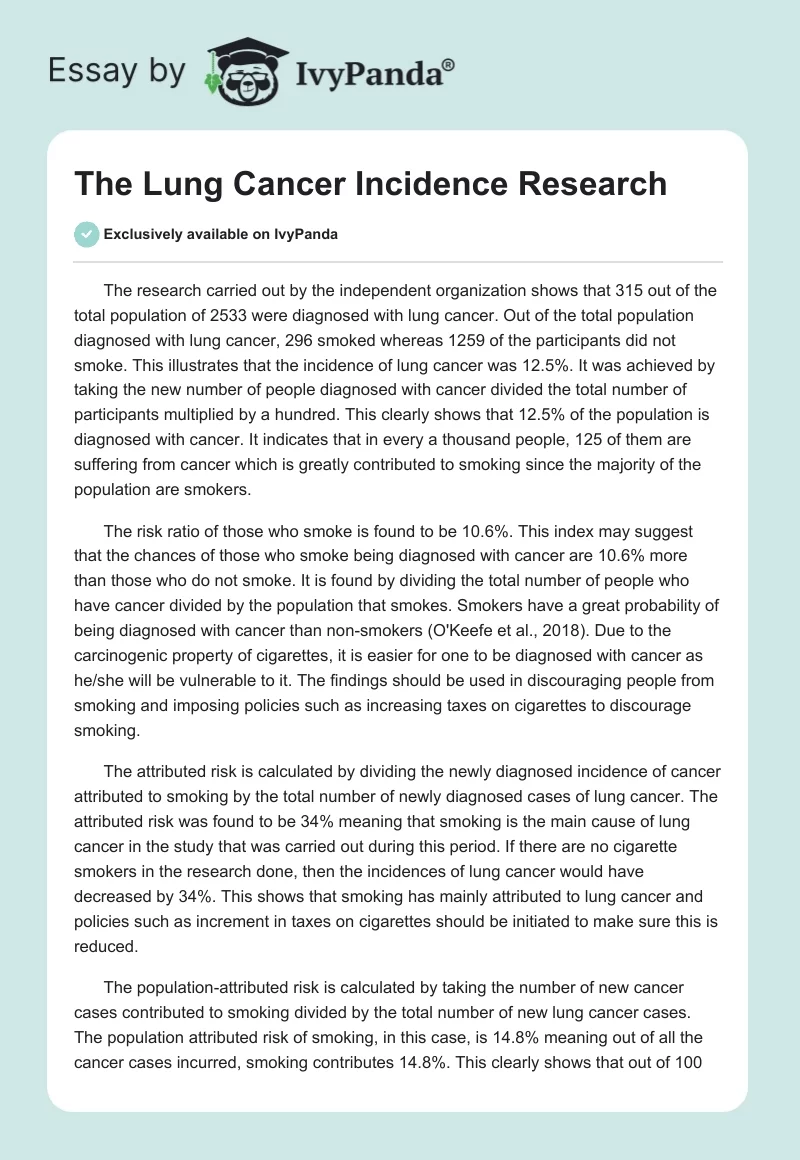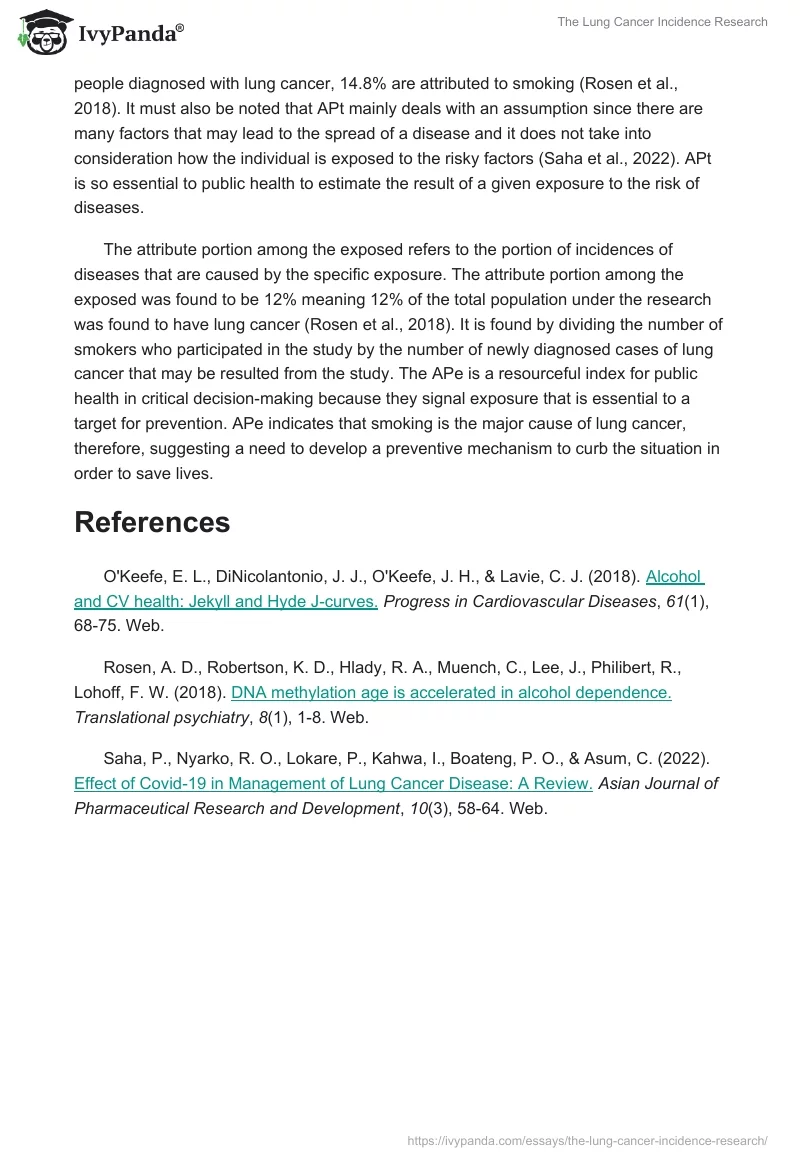The research carried out by the independent organization shows that 315 out of the total population of 2533 were diagnosed with lung cancer. Out of the total population diagnosed with lung cancer, 296 smoked whereas 1259 of the participants did not smoke. This illustrates that the incidence of lung cancer was 12.5%. It was achieved by taking the new number of people diagnosed with cancer divided the total number of participants multiplied by a hundred. This clearly shows that 12.5% of the population is diagnosed with cancer. It indicates that in every a thousand people, 125 of them are suffering from cancer which is greatly contributed to smoking since the majority of the population are smokers.
The risk ratio of those who smoke is found to be 10.6%. This index may suggest that the chances of those who smoke being diagnosed with cancer are 10.6% more than those who do not smoke. It is found by dividing the total number of people who have cancer divided by the population that smokes. Smokers have a great probability of being diagnosed with cancer than non-smokers (O’Keefe et al., 2018). Due to the carcinogenic property of cigarettes, it is easier for one to be diagnosed with cancer as he/she will be vulnerable to it. The findings should be used in discouraging people from smoking and imposing policies such as increasing taxes on cigarettes to discourage smoking.
The attributed risk is calculated by dividing the newly diagnosed incidence of cancer attributed to smoking by the total number of newly diagnosed cases of lung cancer. The attributed risk was found to be 34% meaning that smoking is the main cause of lung cancer in the study that was carried out during this period. If there are no cigarette smokers in the research done, then the incidences of lung cancer would have decreased by 34%. This shows that smoking has mainly attributed to lung cancer and policies such as increment in taxes on cigarettes should be initiated to make sure this is reduced.
The population-attributed risk is calculated by taking the number of new cancer cases contributed to smoking divided by the total number of new lung cancer cases. The population attributed risk of smoking, in this case, is 14.8% meaning out of all the cancer cases incurred, smoking contributes 14.8%. This clearly shows that out of 100 people diagnosed with lung cancer, 14.8% are attributed to smoking (Rosen et al., 2018). It must also be noted that APt mainly deals with an assumption since there are many factors that may lead to the spread of a disease and it does not take into consideration how the individual is exposed to the risky factors (Saha et al., 2022). APt is so essential to public health to estimate the result of a given exposure to the risk of diseases.
The attribute portion among the exposed refers to the portion of incidences of diseases that are caused by the specific exposure. The attribute portion among the exposed was found to be 12% meaning 12% of the total population under the research was found to have lung cancer (Rosen et al., 2018). It is found by dividing the number of smokers who participated in the study by the number of newly diagnosed cases of lung cancer that may be resulted from the study. The APe is a resourceful index for public health in critical decision-making because they signal exposure that is essential to a target for prevention. APe indicates that smoking is the major cause of lung cancer, therefore, suggesting a need to develop a preventive mechanism to curb the situation in order to save lives.
References
O’Keefe, E. L., DiNicolantonio, J. J., O’Keefe, J. H., & Lavie, C. J. (2018). Alcohol and CV health: Jekyll and Hyde J-curves.Progress in Cardiovascular Diseases, 61(1), 68-75. Web.
Rosen, A. D., Robertson, K. D., Hlady, R. A., Muench, C., Lee, J., Philibert, R., Lohoff, F. W. (2018). DNA methylation age is accelerated in alcohol dependence.Translational psychiatry, 8(1), 1-8. Web.
Saha, P., Nyarko, R. O., Lokare, P., Kahwa, I., Boateng, P. O., & Asum, C. (2022). Effect of Covid-19 in Management of Lung Cancer Disease: A Review.Asian Journal of Pharmaceutical Research and Development, 10(3), 58-64. Web.


